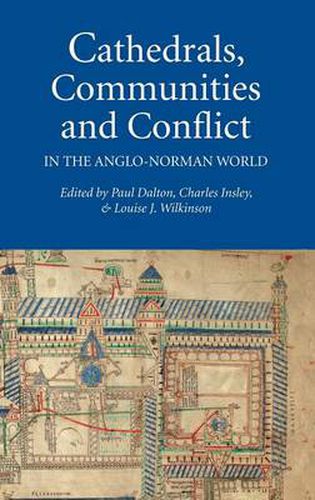Readings Newsletter
Become a Readings Member to make your shopping experience even easier.
Sign in or sign up for free!
You’re not far away from qualifying for FREE standard shipping within Australia
You’ve qualified for FREE standard shipping within Australia
The cart is loading…






Cathedrals dominated the ecclesiastical (and physical) landscape of the British Isles and Normandy in the middle ages; yet, in comparison with the history of monasteries, theirs has received significantly less attention. This volume helps to redress the balance by examining major themes in their development between the eleventh and thirteenth centuries. These include the composition, life, corporate identity and memory of cathedral communities; the relationships, sometimes supportive, sometimes conflicting, that they had with kings (e.g. King John), aristocracies, and neighbouring urban and religious communities; the importance of cathedrals as centres of lordship and patronage; their role in promoting and utilizing saints’ cults (e.g. that of St Thomas Becket); episcopal relations; and the involvement of cathedrals in religious and political conflicts, and in the settlement of disputes. A critical introduction locates medieval cathedrals in space and time, and against a backdrop of wider ecclesiastical change in the period.
Contributors: Paul Dalton, Charles Insley, Louise J. Wilkinson, Ann Williams, C.P. Lewis, RichardAllen, John Reuben Davies, Thomas Roche, Stephen Marritt, Michael Staunton, Sheila Sweetinburgh, Paul Webster, Nicholas Vincent
$9.00 standard shipping within Australia
FREE standard shipping within Australia for orders over $100.00
Express & International shipping calculated at checkout
Cathedrals dominated the ecclesiastical (and physical) landscape of the British Isles and Normandy in the middle ages; yet, in comparison with the history of monasteries, theirs has received significantly less attention. This volume helps to redress the balance by examining major themes in their development between the eleventh and thirteenth centuries. These include the composition, life, corporate identity and memory of cathedral communities; the relationships, sometimes supportive, sometimes conflicting, that they had with kings (e.g. King John), aristocracies, and neighbouring urban and religious communities; the importance of cathedrals as centres of lordship and patronage; their role in promoting and utilizing saints’ cults (e.g. that of St Thomas Becket); episcopal relations; and the involvement of cathedrals in religious and political conflicts, and in the settlement of disputes. A critical introduction locates medieval cathedrals in space and time, and against a backdrop of wider ecclesiastical change in the period.
Contributors: Paul Dalton, Charles Insley, Louise J. Wilkinson, Ann Williams, C.P. Lewis, RichardAllen, John Reuben Davies, Thomas Roche, Stephen Marritt, Michael Staunton, Sheila Sweetinburgh, Paul Webster, Nicholas Vincent